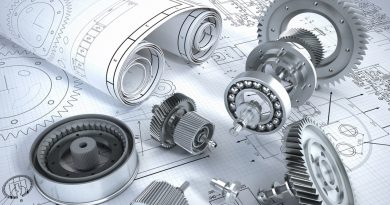HeavyDuty Incremental Encoders
HeavyDuty Incremental Encoders or HDIEs are a relatively new breed of encoders that have been created to compete with the real-time capabilities of existing encoders. They allow for low latency, easy integration, and high throughput on a single machine.
Incremental encoders are encoders with a feedback loop. They monitor the movement of a motor or some other target and incrementally alter their output signal according to how much movement has been completed. Incremental encoders use the actual amount of movement to generate their output pulse train. The digital output (AO) or TTL serial data stream generated is directly proportional to the amount of turning that has been achieved by the rotary feedback target (RFT).
A variable speed electric motor encoder provides an advanced solution for measuring the rotational movement of rotating components, such as shafts and gears. The motor is honeycombed with internal wires in order to provide a smooth, continuous encoder signal over the range of motion.visit here
In a wide application in various industries, heavy-duty incremental encoders are typically employed to measure up to 1/32nd seconds (1HZ). Incremental range signals are especially useful when precision timekeeping is required.
While traditional mechanical counters make use of pinions or rack-and-pinion gears, heavy-duty incremental sensors use electric motors that provide a faster output than the possible mechanical speeds available from pinions and gears. In addition, the electric motor is more accurate and durable than a mechanical counter.
Electric motor incremental encoders are now widely used as part of industrial automation systems. These systems may also rely on other types of encoders such as absolute, shaft displacement or tachometers, depending on their functions.
A variable speed electric motor encoder provides an advanced solution for measuring the rotational movement of rotating components, such as shafts and gears. The motor is honeycombed with internal wires in order to provide a smooth, continuous encoder signal over the range of motion.
In a wide application in various industries, heavy-duty incremental encoders are typically employed to measure up to 1/32nd seconds (1HZ). Incremental range signals are especially useful when precision timekeeping is required.
While traditional mechanical counters make use of pinions or rack-and-pinion gears, heavy-duty incremental sensors use electric motors that provide a faster output than the possible mechanical speeds available from pinions and gears. In addition, the electric motor is more accurate and durable than a mechanical counter.
Electric motor incremental encoders are now widely used as part of industrial automation systems. These systems may also rely on other types of encoders such as absolute, shaft displacement or tachometers, depending on their functions.
Figure 1. Example of an incremental motor encoder
The incremental motor is available in various specifications and features. Figure 1 shows a typical heavy-duty incremental sensor, which can be used in various applications like industrial automation systems, digital speedometers and data loggers, electronic tachometers, digital counters, and more.
Post Content
Uses for Heavy-Duty Incremental Encoders
The many uses for heavy-duty encoders include examples such as material handling equipment (forklift trucks), automated storage facilities (ASF), and automated guided vehicles (AGV). These devices rely on their sensors to provide accurate data on the movement of goods or vehicles between storage locations or workstations.
The larger devices that rely on heavy-duty encoders often employ them to provide accurate data with long-term reliability. For example, forklift trucks typically use heavy-duty sensors in order to prevent damage or accidents to the system components.
Applications of Heavy Duty Incremental Encoders
Example of an industrial machine utilizing heavy-duty incremental sensors
Heavy-duty incremental sensor applications include automatically controlled machines, AGVs, material handling equipment (forklifts), and automated storage facilities (ASF). These machines are designed for high performance and durability that are often required in the application area. Examples include forklifts, automated storage facilities, automatic guided vehicles (AGVs), material handling equipment, and more.
Industry Examples
The uses for heavy-duty incremental sensors include automatically controlled machines, AGVs, material handling equipment (forklifts), and automated storage facilities (ASF). These machines are designed for high performance and durability that are often required in the application area. Examples include forklifts, automated storage facilities, automatic guided vehicles (AGVs), material handling equipment, and more. Applications of Heavy Duty Incremental Encoders
Industry Examples
The uses for heavy-duty incremental sensors include automatically controlled machines, AGVs, material handling equipment (forklifts), and automated storage facilities (ASF). These machines are designed for high performance and durability that are often required in the application area. Examples include forklifts, automated storage facilities, automatic guided vehicles (AGVs), material handling equipment, and more.




